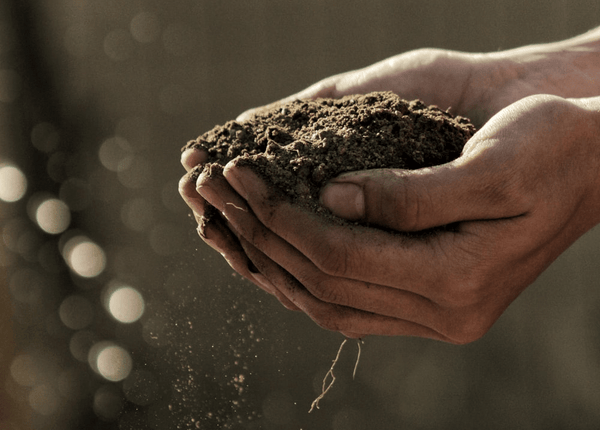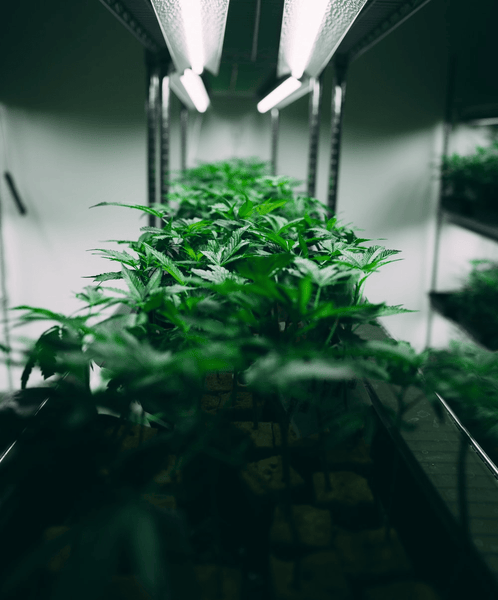The Best Type of Soil for Growing Cannabis
Cannabis growing regulations differ significantly from one country to another and from state to state. Growing cannabis is prohibited in many locations, and the penalties, including heavy fines and jail, can be even worse than possession, considering growing might infer an intention to distribute. So before embarking on growing your buds, it’s a good idea to conduct some research and make sure you comply with local laws. If you satisfy the legal requirements, it’s not a bad idea to try your hand at growing cannabis. This article will provide you with information about cannabis and the finest soil for growing cannabis.
Cannabis plants exist in both male and female varieties. Female plants produce lush blooms, buds packed with psychoactive chemicals such as tetrahydrocannabinol, or THC, the chemical ingredient responsible for getting high. Male plants produce significantly smaller blooms and buds, normally not consumed. As a result of this understanding, before cultivating cannabis, you should obtain female plants. Should you buy seeds from a seed store, make careful to receive seeds branded ‘feminized’ to ensure you get female plants. If you’re unsure about the seeds you’re obtaining, it’s advisable to get clones cut from female plants at nurseries and dispensaries. Clones are easy to get and cultivate since they merely require transplanting.
Now let’s talk soils! Cannabis, as with other crops, need water, nutrients, and oxygen to flourish. These three basic components determine the plants’ growth pace, general health, and eventual output and therefore for an optimum yield, your soil of choice should be rich in them. Unless you’re utilizing a soil type that is recognized to be especially cannabis-friendly, there may be a few factors to consider before actually establishing a grow. A perfect cannabis soil, according to most producers, should be darkish and rich, with a porous texture that drains well and can retain moisture without becoming muddy. Though that’s not all you need for a perfect grow, what else should you look for?

The Best Type of Soil for Growing cannabis outdoors

Unless the temperature is unpleasant for the plants, cultivating marijuana outdoors has several advantages over growing it indoors. It may be highly cost-effective because you don’t need to build a greenhouse to house the crops. Artificial light, unlike inside, is not required if placed in the proper location in your garden since your plants will benefit from the sun’s free light, lowering your power expenditures significantly. Furthermore, you do not have to provide expensive soil for the plants outdoors. However, for the sake of your plants, you’ll need decent cannabis soil that will aid in their healthy growth.
Types of soil
Sand, silt, clay, and loam are the four fundamental forms of soil. Each soil type has its own set of benefits and drawbacks for gardening. Silt soil is abundant in nutrients and is good at water retention. In some situations, though, silt might become compressed and rigid. The soil can also turn into a crust, limiting moisture and minerals from reaching the roots of crops. When clay is heated and dry, it can harden into a rock, rendering root penetration challenging. Clay is difficult to grow as it drains poorly. It is, on the other hand, high in organic minerals. Although the sand is porous for root development, it does not store water or fertilizer effectively. The mentioned features render all the soils above unideal for growing cannabis, and this takes us to the characteristics of an ideal soil for the plant.
What should you look for in good cannabis soil?
Even though marijuana may grow in a wide variety of soils, it’s recommended to utilize the ideal soil for the plant to flourish and create trichomes, THC, and other cannabinoids. The best soil for your plants should have the following features:
- Nitrogen and phosphorus in the right proportions
- Great drainage
- Excellent water retention
- The right bacteria-to-fungus ratio
- Because cannabis thrives in slightly acidic soils, a pH of 6 is recommended
The potential for hydrogen, or pH, is significant in marijuana cultivation since it allows you to determine whether the soil is basic or acidic before planting. Although cannabis can grow at pH levels lower than 5.7 or higher than 6.2, the yields will not be as good as they would be at the appropriate pH. To simplify the concept of pH, water is generally neutral, with a pH of 7. A pH above the neutral pH, say 8, implies it’s alkaline, such as seawater, and a pH below 7 means acidic. Values near 7 are mild bases and acids, whereas figures close to 1 are strong acids. Since soil contains moisture, it has a pH level, which changes depending on soil, minerals, and agricultural inputs like fertilizers and pesticides used. A pH of 6 encourages the cannabis plant to thrive, resulting in increased outputs.
Moisture, nutrients, and light requirements
For healthy cannabis plants, you’ll need to offer the right volume of water and light. Drip irrigation may help you save money on water while also boosting the quality of the plant. There are starter kits available that include all you need to start your growing expedition. If you like, you may start from scratch and collect individual components before putting them all together. Plants, like people, require the correct nutrition. Potassium (K), nitrogen (N), and phosphate (P) are the most crucial for growing cannabis plants. These are the ratios that you’ll see on fertilizer labels for marijuana cultivation. For healthy development, finding the correct balance is crucial. There are several pre-mixed cannabis fertilizers on the market to make your job easier, but you may also make your own formula.
Loam soil for growing cannabis
Considering the soils mentioned above and features for an ideal soil, loam is the best soil for cannabis cultivation as it meets the requirements. Loam is a blend of sand, silt, and clay that brings out the most remarkable features of each kind of soil while reducing the negative aspects. The ideal silt, clay, and sand ratio for loam soil is 40% silt, 20% clay, and 40% sand. Because a pH of 6 is suitable for cannabis cultivation, loam is an excellent choice because its pH is close to neutral; therefore, it falls into that pH category, requiring minimum alterations to get the perfect pH for your plants.

To determine the acidity of your soil, testing kits are available, or you may send a specimen to your local extension consultant. Soil additives can be used to decrease or elevate the pH level in the soil if it lacks the necessary acidity. Your local extension consultant, nursery, or gardening store may be able to provide some recommendations. Loam is suitable for both indoor and outdoor growth. It is, unfortunately, generally the most costly soil to purchase. However, if you want to cultivate the healthiest crops possible, it might pay off big time in the long run.
By adding manure to your loam soil, you may make it rich and ideal for your marijuana plants. You may use compost to enrich your soil if you have a compost bin. It will be a lengthy and continuous process, but with determination and perseverance, it is a task that can be accomplished.
It’s advisable to dig a 2.5 to 3.5 foot deep and wide hole in the natural earth and fill it with organic soil when growing cannabis plants outside. This will allow your plants to obtain adequate water retention, nutrition, and drainage, allowing them to grow and thrive. Pots filled with organic soil can also be used. Check the quantity of sunshine, rainfall, temperature, humidity, and, most importantly, the presence of pests.
The Ideal Soil for Indoor-Grown Cannabis Plant

The best soil for growing cannabis indoors is loam soil, just like outdoor gardening. It should, however, be used in conjunction with fertilizer. The loam soil will provide the right balance of nutrients, phosphorus, carbon, and nitrogen to ensure that your plant gets precisely what it needs at every growth phase. On the other hand, the fertilizer will allow plants to grow large and create a lot of cannabinoids.
The Ideal Soil for Auto-Flowering Cannabis
For the cannabis plant to blossom, the importance of light in plant development throughout the day is critical. These photoperiod plants require 12-15 hours of light every day if cultivated outdoors. The issue is that they don’t usually get this much light until late in the summer. However, if you cultivate cannabis plants inside, you have perfect control over the quantity of light they receive. You should know that certain marijuana plants may auto-flower, which means that their blooming period is not reliant on the amount of light they receive. Alternatively, when they reach a particular growth stage, they advance to the blossoming stage. Cannabis plants that self-flower want a lighter, airier soil with minimal fertilizers. That implies the soil types we described before aren’t suitable for them. However, this does not rule out the possibility of using conventional or ordinary soil. We’re implying that using lighter soil will yield more outstanding outcomes.
Sample Block Quote
Nam tempus turpis at metus scelerisque placerat nulla deumantos sollicitudin delos felis. Pellentesque diam dolor an elementum et lobortis at mollis ut risus. Curabitur semper sagittis mino de condimentum.















